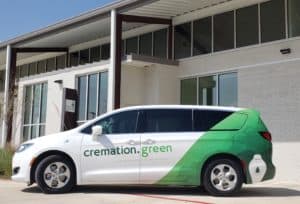There’s a chance you may have heard more about body donation lately. The practice is becoming more common, particularly in the wake of the Covid pandemic. That once in a lifetime event changed many people’s perspectives on health and wellness. For some, it increased their desire to help the medical community expand their knowledge. One way a person can do that is by donating their body to science.
Every year around 20,000 Americans elect to donate their bodies to science. The University of California notes that their Anatomical Donation Program alone receives 1,000 donations annually.
A decade ago Harvard University analyzed who it was that chose to donate their bodies. They found that younger (71 years old) married men with higher education were among those most likely to donate their body to science. Educated older women who were widowed or divorced and more likely to be foreign born or have parents that were foreign-born are another group that’s open to body donation.
Of course, people from all walks of life can choose to donate their body after death. In the last ten years more groups are getting onboard and showing interest in body donation. The real question is how you can arrange a cremation after the donation so that you help advance science while still getting the funeral services you want.
The Duration for Body Donation Before Disposition
Usually after someone dies the disposition services begin right away. The funeral home will orchestrate the transport of the body to their facility so that the body can be preserved and prepared for the next step. When a person decides to donate their body all of that is put on hold.
Body donation isn’t the same as donating your organs, although donating organs can be part of the process. Body donation is much more involved because there are more possible uses that don’t have to be performed immediately.
Often organ donation will happen first because time is of the essence. Organs must be removed within minutes of a person’s death. Other tissue can also be donated at this time, including the eyes.
Once the organ and tissue donation is complete, the body is then transported to the donation facility. This is often a medical school or educational center that operates a body donor program. The timeline for this phase is less certain, and largely depends on what type of medical research is being conducted. For example, a medical program may specialize in Alzheimer’s research and plan to utilize the donor’s brain. However, another medical center may have various research departments that will be using the donated body, possibly at different times. When that’s the case you can expect the body donation process to take longer.
Something that impacts the entire process is lack of regulations. Surprisingly, body donation is fairly deregulated compared to organ donation. The Uniform Anatomical Gift Act is one of the few federal acts regarding body donation. So far 47 states have adopted the act and its protocols for body donations. Most notable is that there must be a consent form that explains what the body will be used for prior to the donation.
This will give you an idea of the timeline for the body donation. If the consent form is too vague or broad, ask for more specifics. Watch out for addendums that expand the uses beyond medical research and education. Because there is so little oversight, it’s important to work with highly reputable, well established organizations such as a university or major medical research facility.
If the body is donated for educational purposes it could be a while before the disposition can occur. Often the body is researched for about a year, but it could be closer to two years. This is a good stretch of time that the family will have to account for when they are making arrangements.
Cremating After Body Donation
Once the donation process is complete there are remains, which means disposition is needed. How the disposition is handled is up to the deceased or their family.
Some people opt to have the medical organization that orchestrates the body donation handle the disposition. This is often the case when the family doesn’t plan to receive the remains for burial or a cremation in which they’ll get the cremated remains. They prefer to be completely hands-off. In these cases, water cremation may be used for the disposition. The cremated remains usually won’t be returned to the family unless requested. They will instead be legally scattered out at sea.
Families can also choose to handle the disposition on their own after the donation if they plan to have funeral services or a memorial. Because things must move quickly after the death, there’s no time to have funeral services with the body present prior to donation. The next best option is to do so after the body donation is complete. The family can choose to bury the cremains, use natural organic reduction or cremate. Unlike disposition handled by the medical facility, you’ll receive the cremated remains unless you request not to receive them. From there the cremains can be stored, buried or scattered.
Did your loved one choose to donate their body to science? Are you making advance funeral arrangements and want to line up eco-friendly cremation after body donation? Cremation.Green can work with families to provide cremation services for those that donate their body so that everything goes seamlessly and easily.
Contact our team to discuss your plans and how we can help facilitate the funeral services you want.






